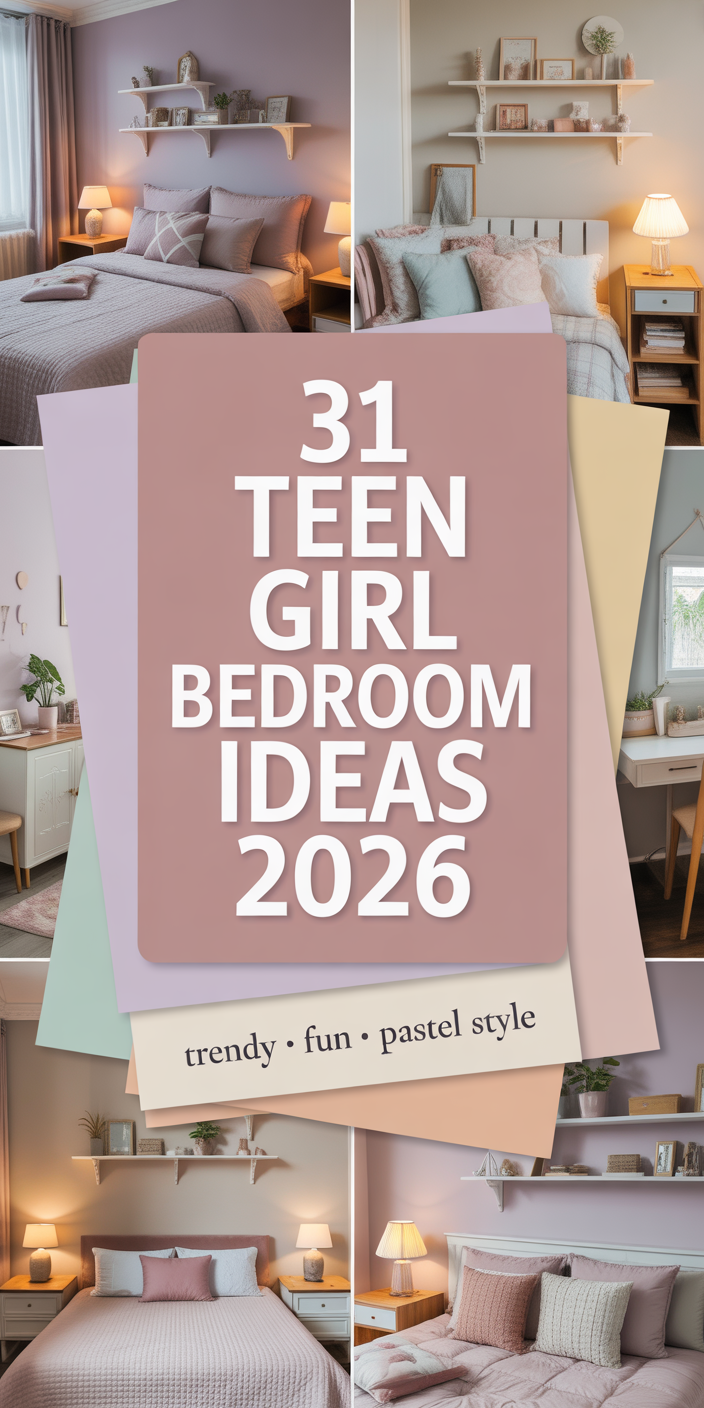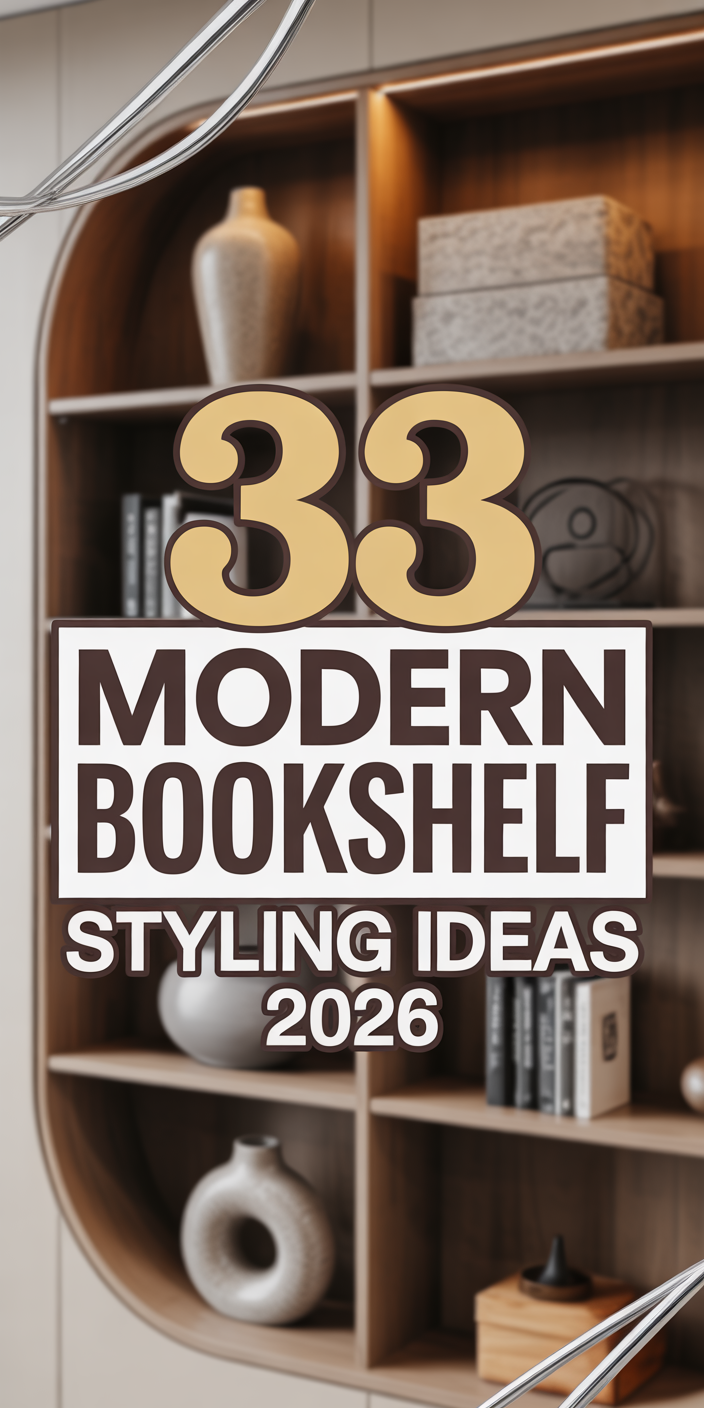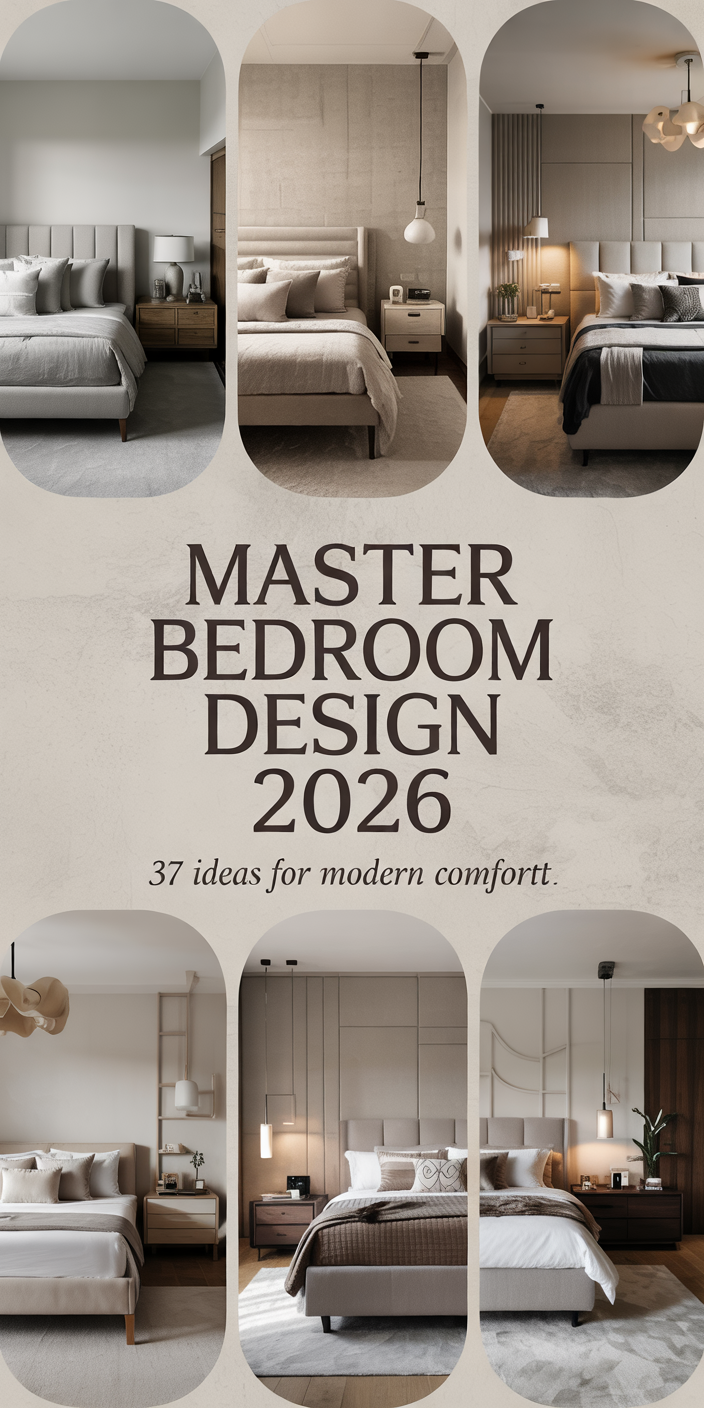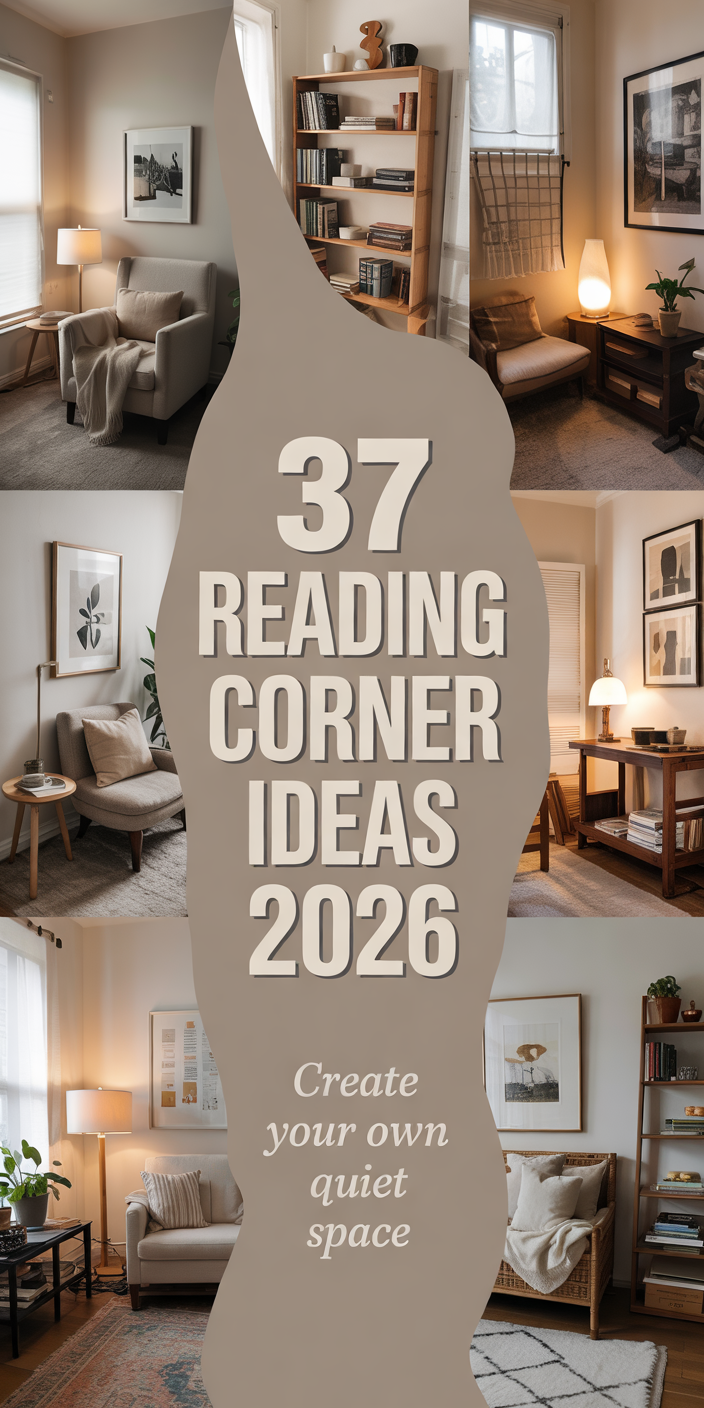Scandinavian Interior Ideas for a Cozy Modern Home with Nordic Style Tips and Japandi Influences
Scandinavian interior has become a favorite for Americans who want calming spaces that feel lived-in, intentional, and personal. Blending simplicity, craftsmanship, and a connection to nature, this approach offers a warm balance between functionality and beauty. Influenced by Nordic designers like Alvar Aalto and beloved by contemporary voices such as Emily Henderson and Studio McGee, this style continues to evolve with touches of Japandi, soft textures, and a grounded sense of comfort. Below are ten ideas that show how this aesthetic can shape every room of your home.
1. Minimal Scandinavian Design

A truly design-driven space begins with clean lines, a minimal layout, and a grounded aesthetic that avoids clutter. Scandinavian style prioritizes functional beauty, relying on a calm color palette and natural materials that make everyday life feel intentional. I remember visiting a small cabin in Minnesota where the owners swore that simplifying their home changed their mood during long winters—proof of the emotional weight good design carries.
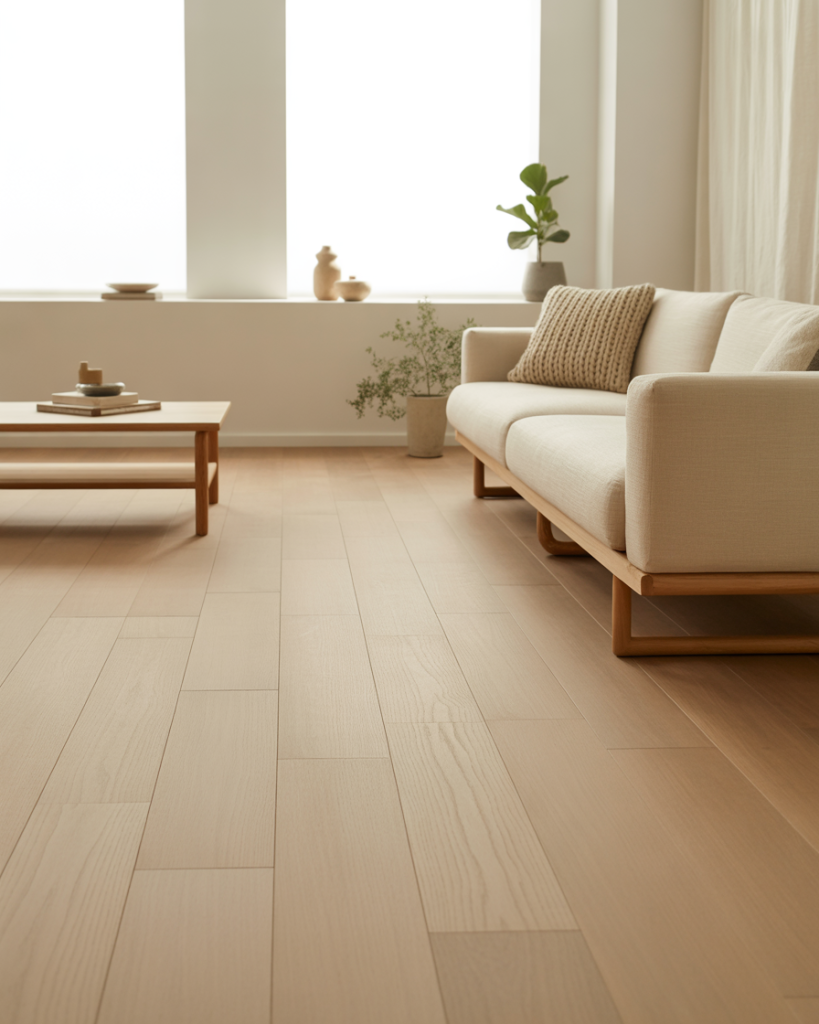
2. Japandi Harmony
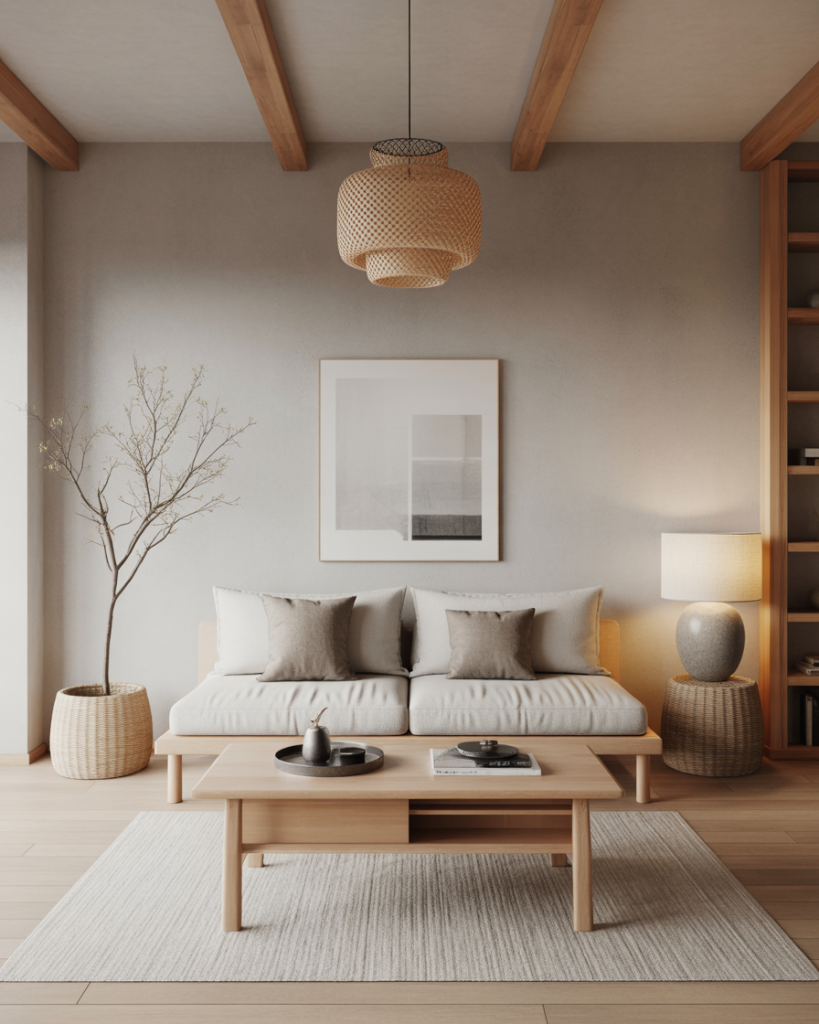
Blending Japandi, Japanese calm, and Nordic warmth creates a contemporary interior that feels both grounding and refined. This idea embraces low furniture, warm woods, and soft textures that suit a living space or bedroom equally well. I once helped a friend merge Scandinavian simplicity with Japanese restraint in her apartment, and the transformation brought an unexpected sense of serenity to her daily routine.
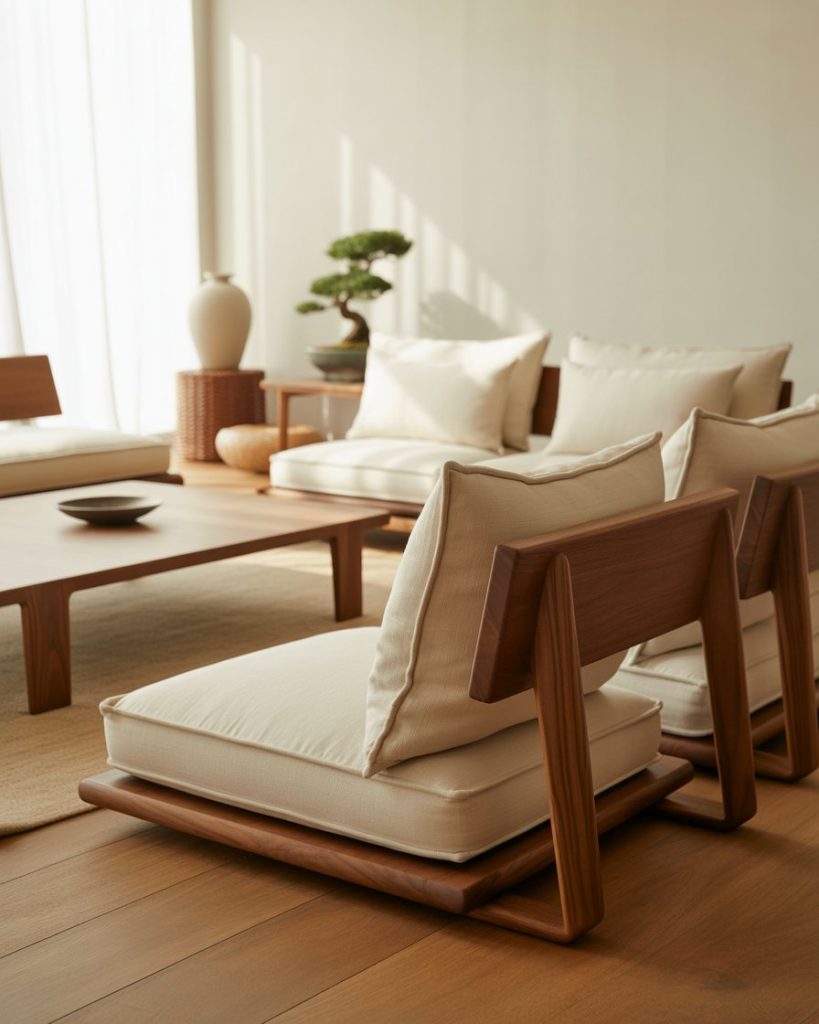
3. Cozy Nordic Living Room
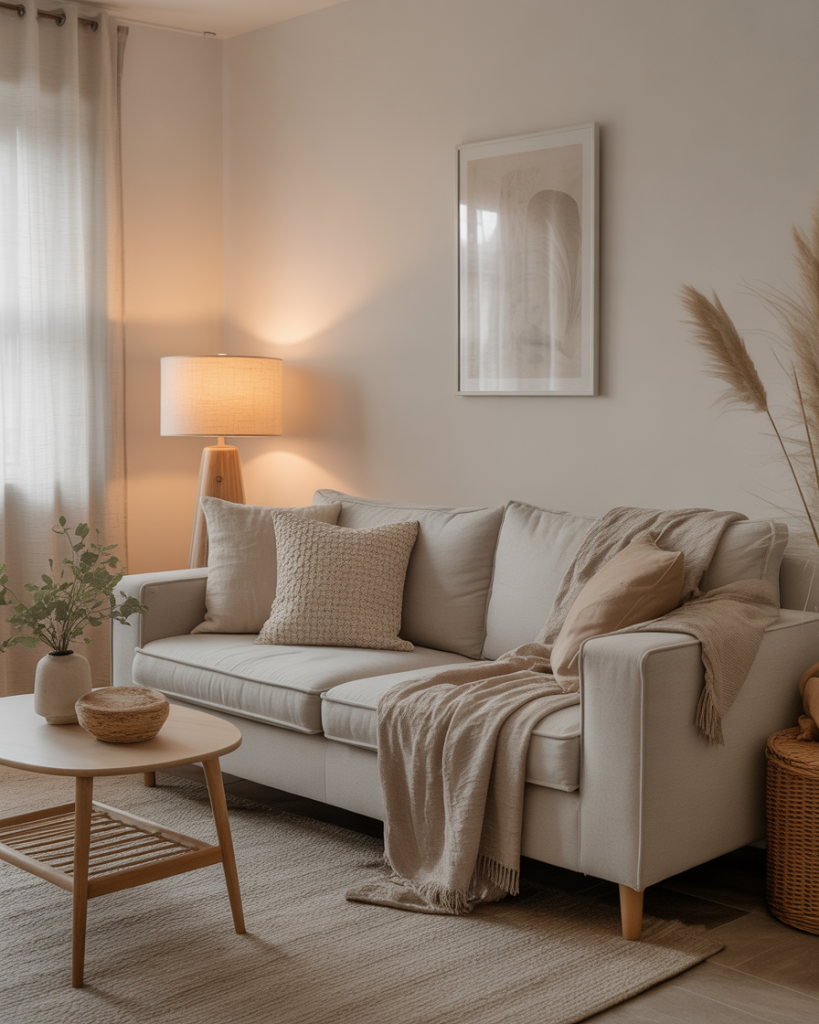
A living room shaped by cozy Nordic principles uses layered textiles, warm lighting, and thoughtful arrangements to encourage connection. A true Nordic living room balances simplicity with comfort, often using wool blankets, candles, and organic forms. Many American homes use these ideas during colder seasons, inspired by the Danish concept of hygge featured on design blogs like Apartment Therapy.
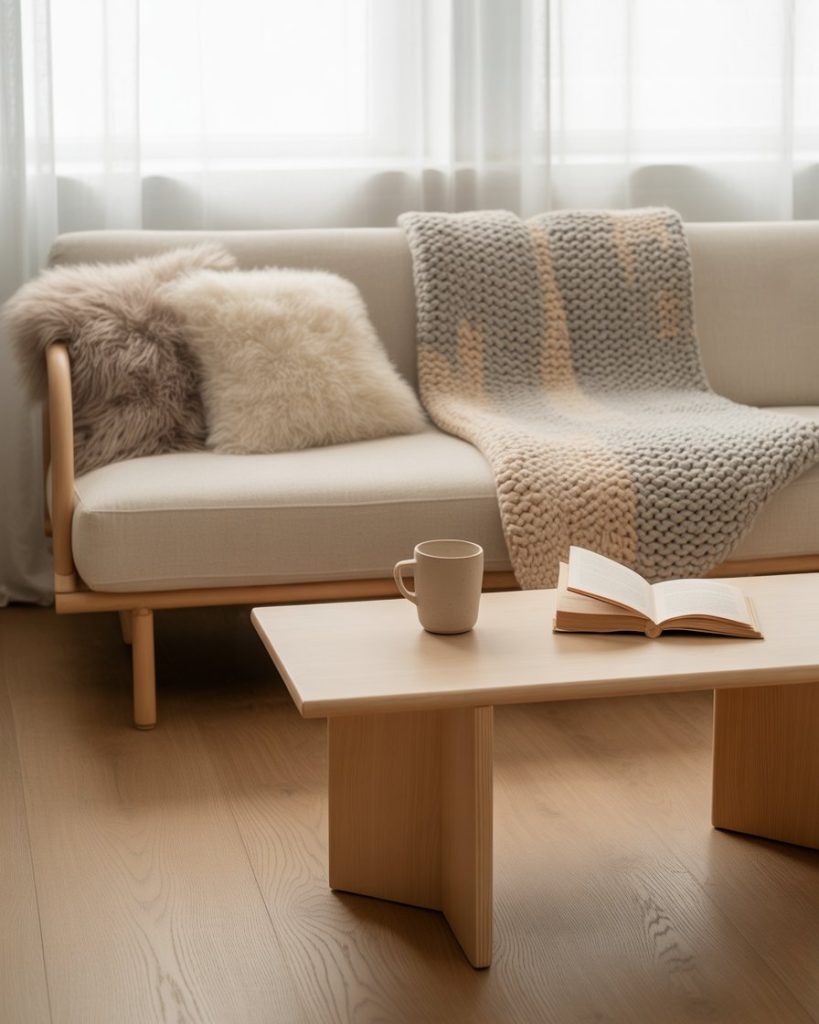
4. Scandinavian Kitchen Warmth
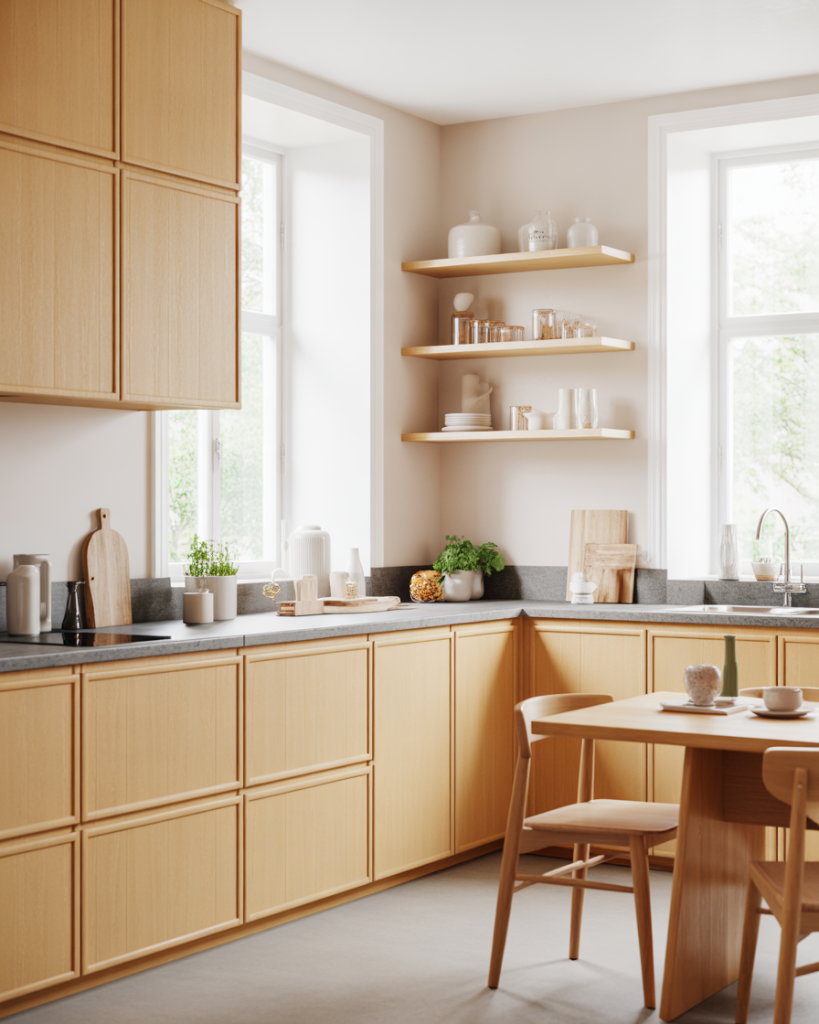
A Scandinavian kitchen mixes functionality with soft minimalism, using a colorful accent or wood to brighten the space. I’ve noticed that even the smallest kitchens feel bigger when designed with Nordic clarity—open shelving, pale cabinetry, and natural stone are favorites among design editors at Remodelista. This approach suits apartments, new builds, and traditional homes equally well.
5. Soft Scandinavian Bedroom
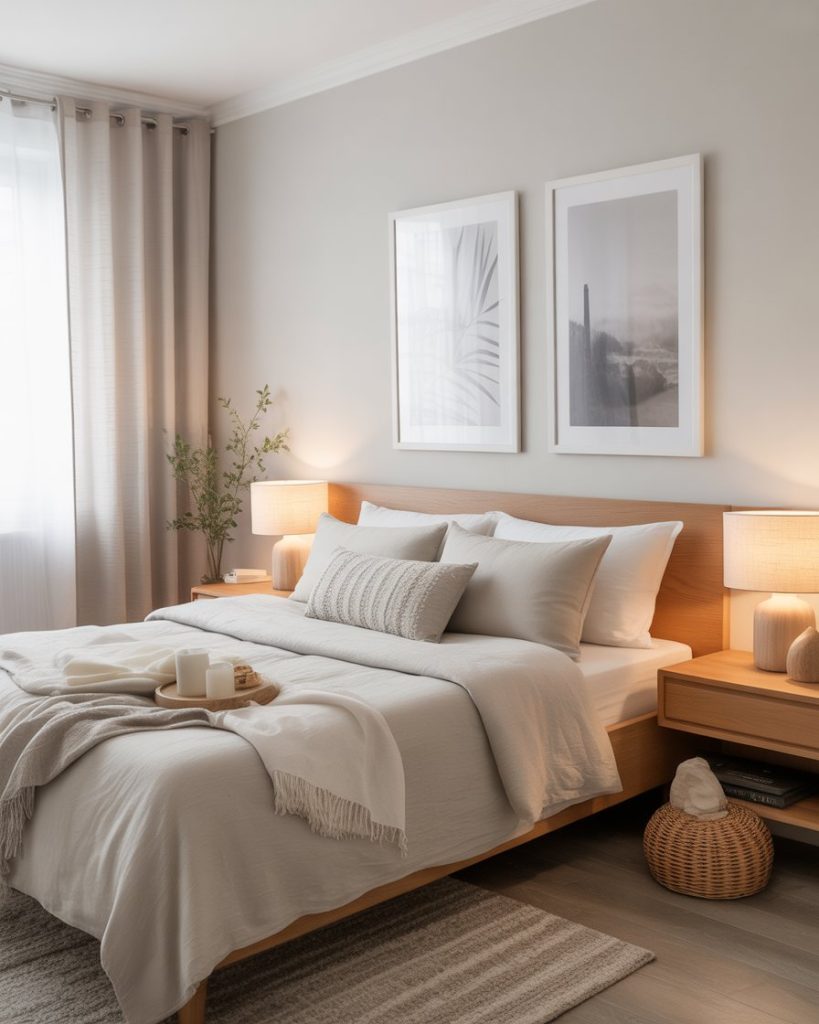
A bedroom rooted in Nordic style relies on soothing tones, warm linens, and thoughtfully placed lighting. Soft neutrals create a sense of refuge, especially in busy urban homes. I once stayed in a Scandinavian-inspired Airbnb in Portland and was surprised how the simple bedding and muted tones instantly made the room feel restful.
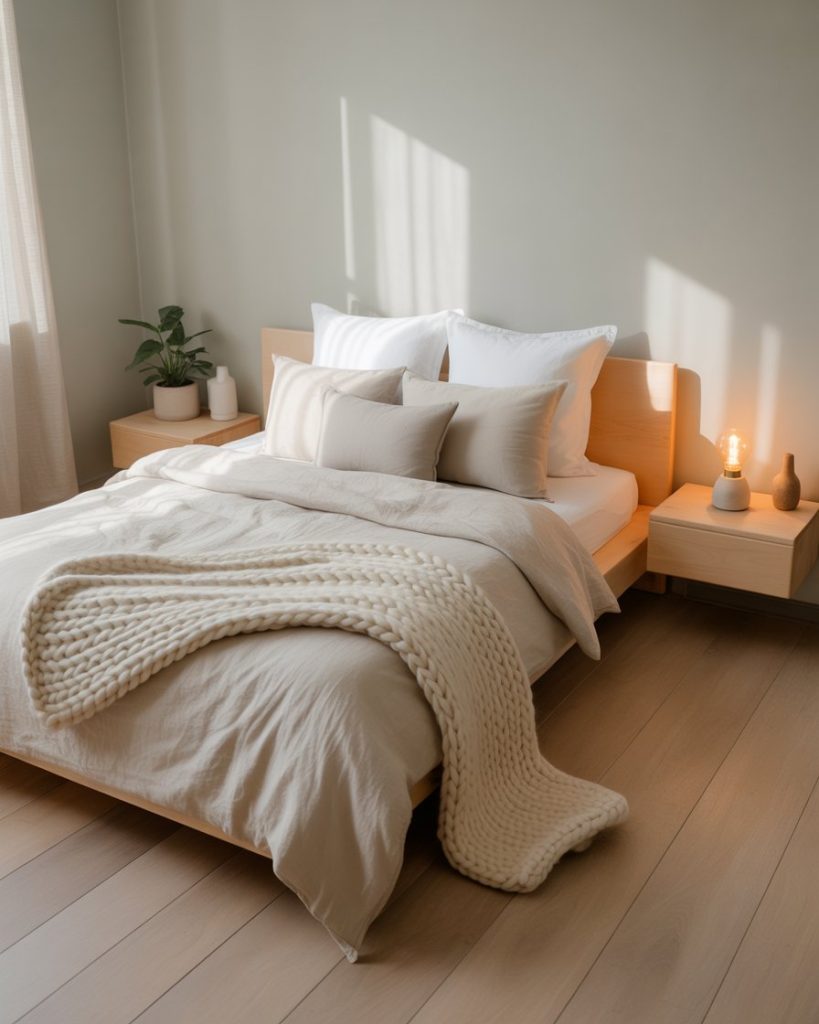
6. Spa-Inspired Bathroom
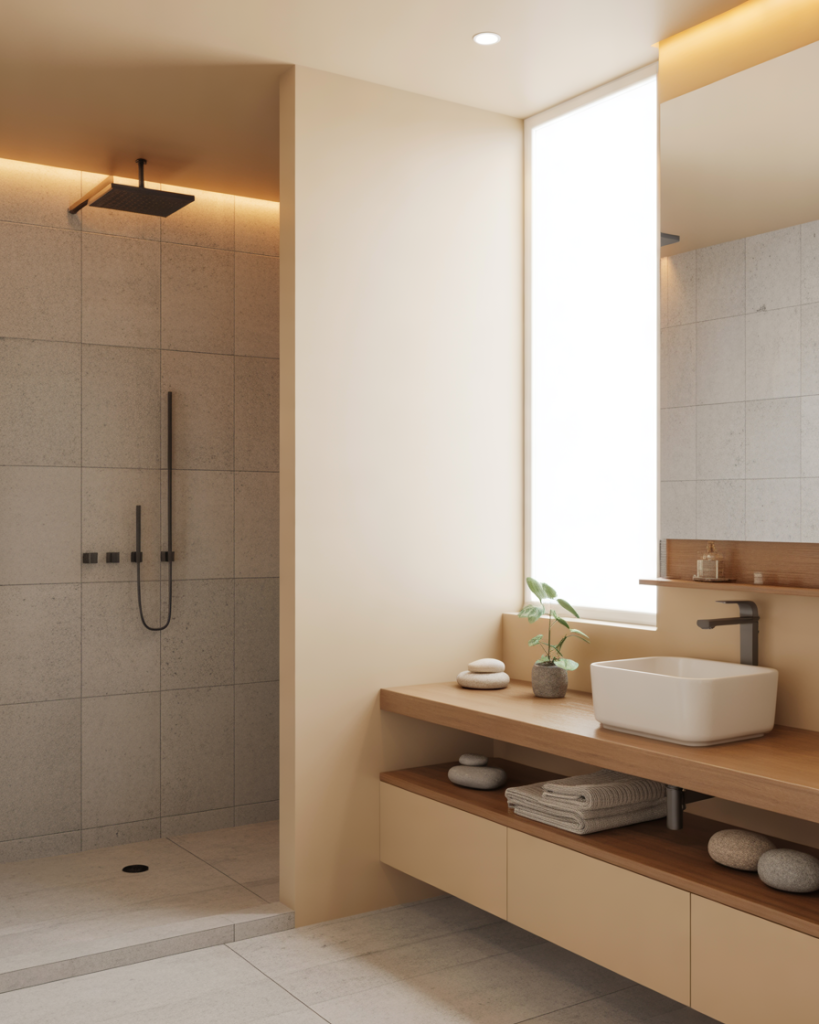
A Scandinavian bathroom embraces clean geometry, natural textures, and practical storage. Soft woods pair with stone and matte finishes for a spa-like experience. Many designers, including those at Nordic Design, emphasize warm lighting to keep dark tile or muted tones feeling inviting rather than cold.
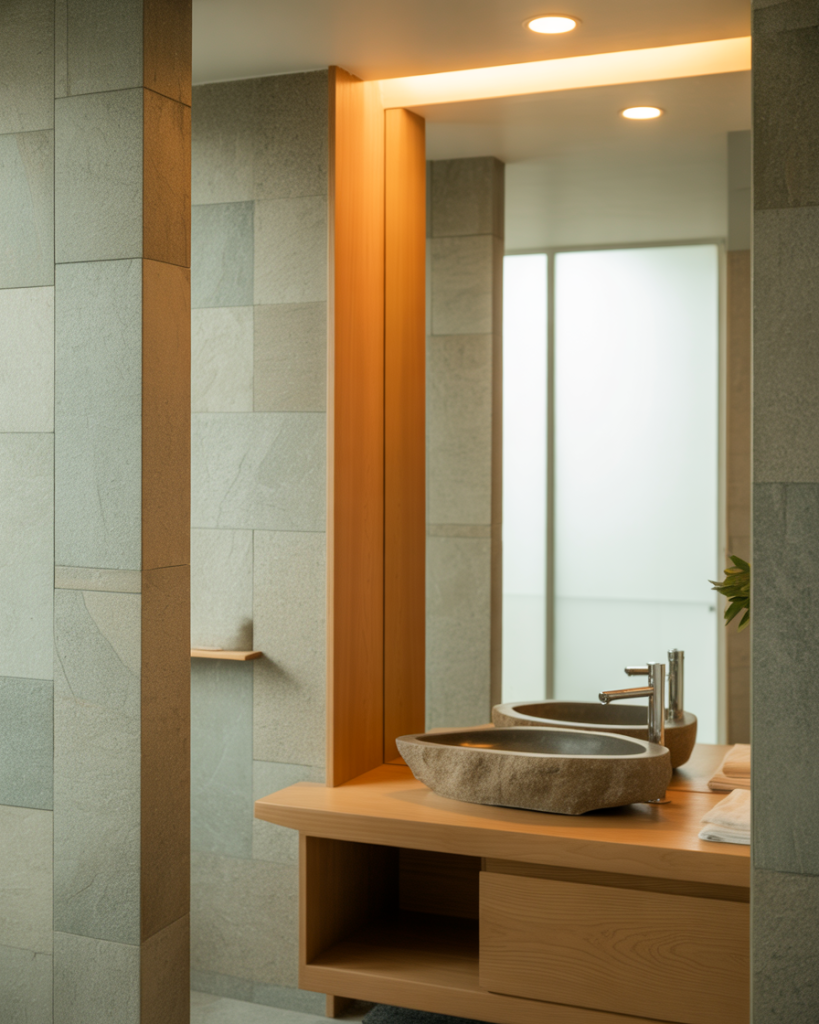
7. Moody Scandinavian Accents

While often associated with light neutrals, Scandinavian interiors can be beautifully moody using deep hues, dark woods, and layered textiles. This works especially well in reading nooks or an office where atmosphere matters. I’ve seen homeowners embrace rich tones after discovering how grounding they feel during long working hours.
8. Vintage Nordic Charm
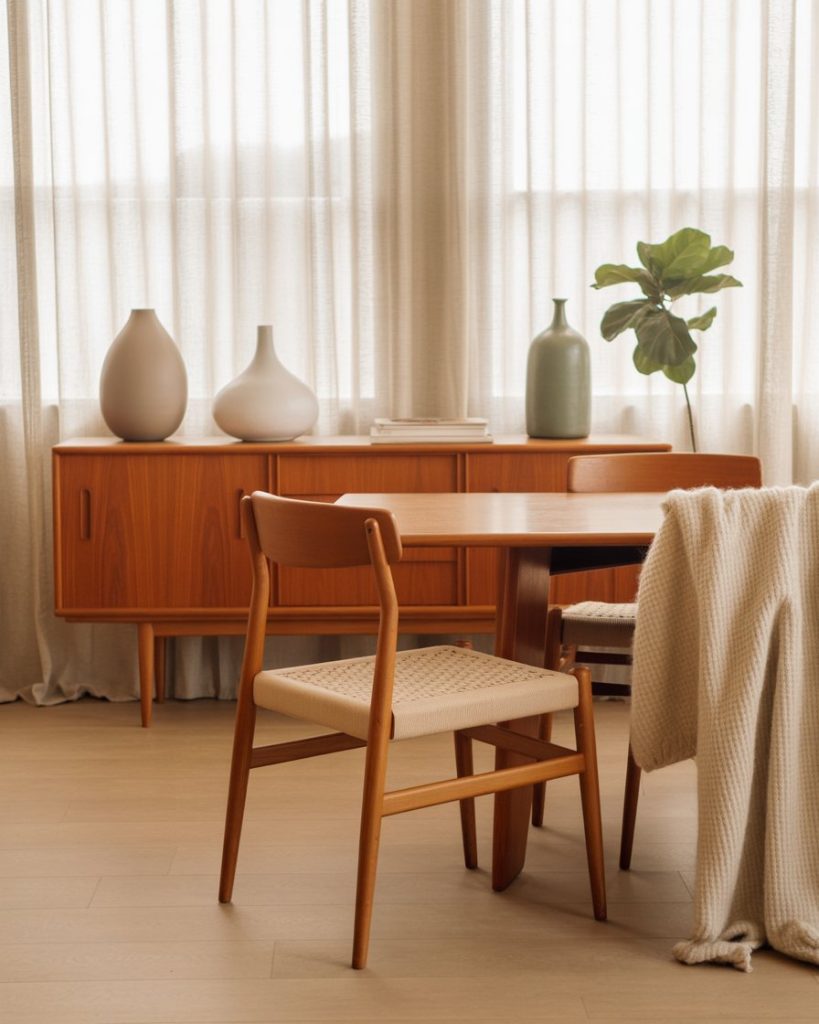
Adding vintage pieces brings authenticity to modern Scandinavian spaces. Classic teak furniture, mid-century finds, or simple traditional ceramics offer character without overwhelming the room. Scandinavian homes often celebrate passed-down items, and this echoes the advice of design writers like those at The Spruce who champion mixing old and new.
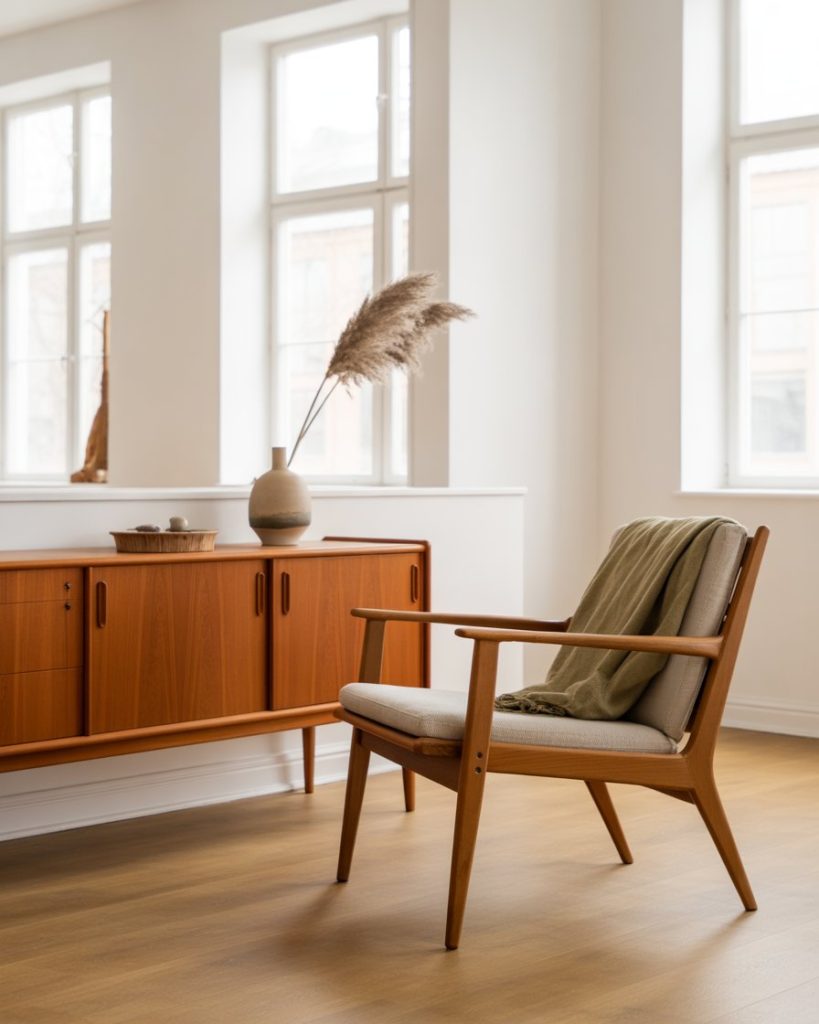
9. Industrial Scandinavian Blend
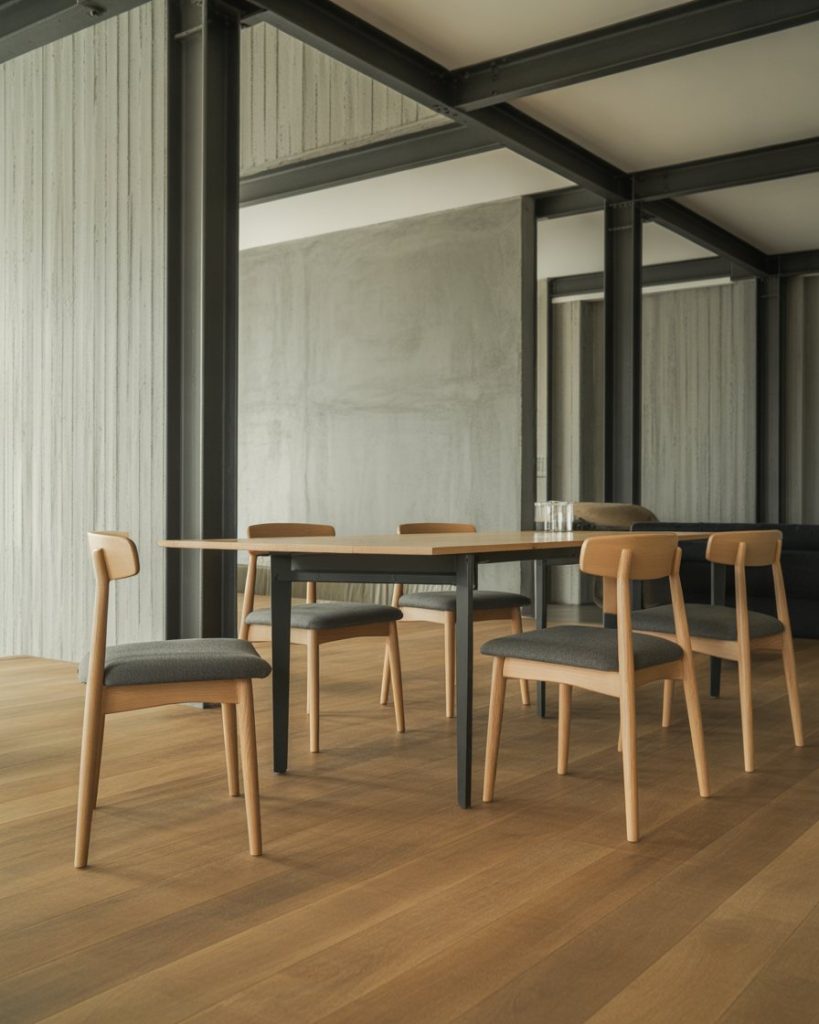
The Scandinavian-meets-industrial look softens concrete, metal, and sharp edges with warm woods and calmer tones. This hybrid is common in lofts and renovated warehouses where Nordic softness offsets raw architectural elements. I once toured a converted mill where Scandinavian textiles transformed the echoing space into something unexpectedly warm.
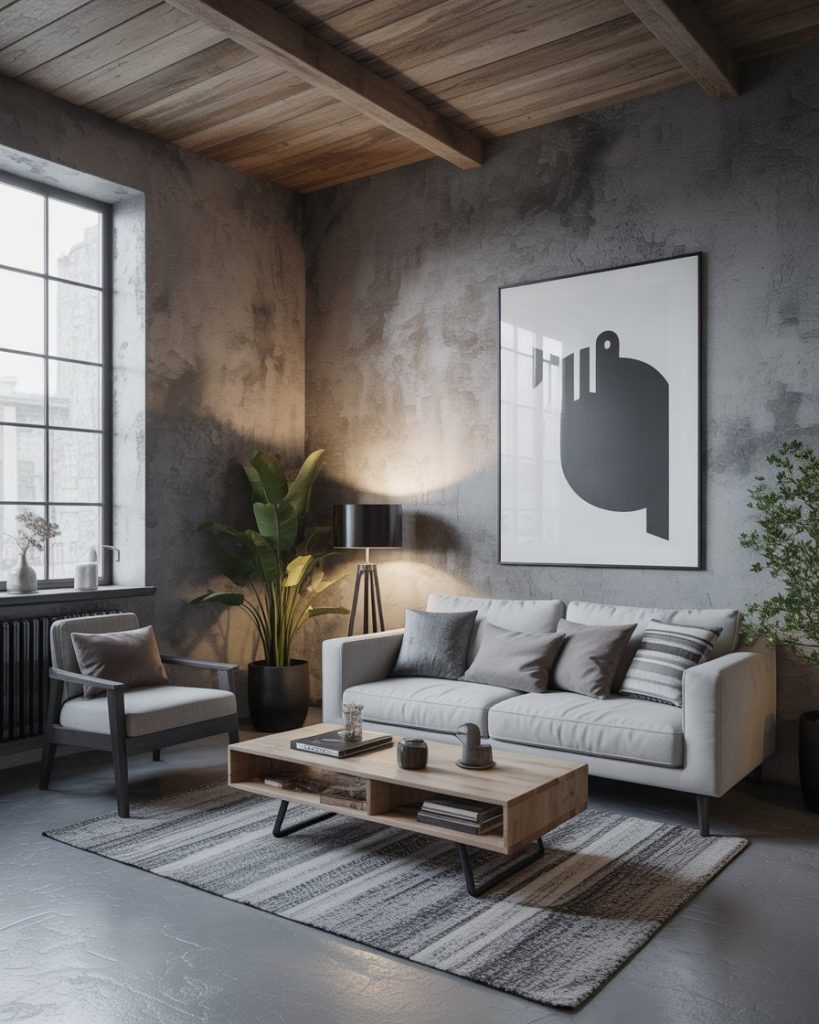
10. Rustic Nordic Warmth
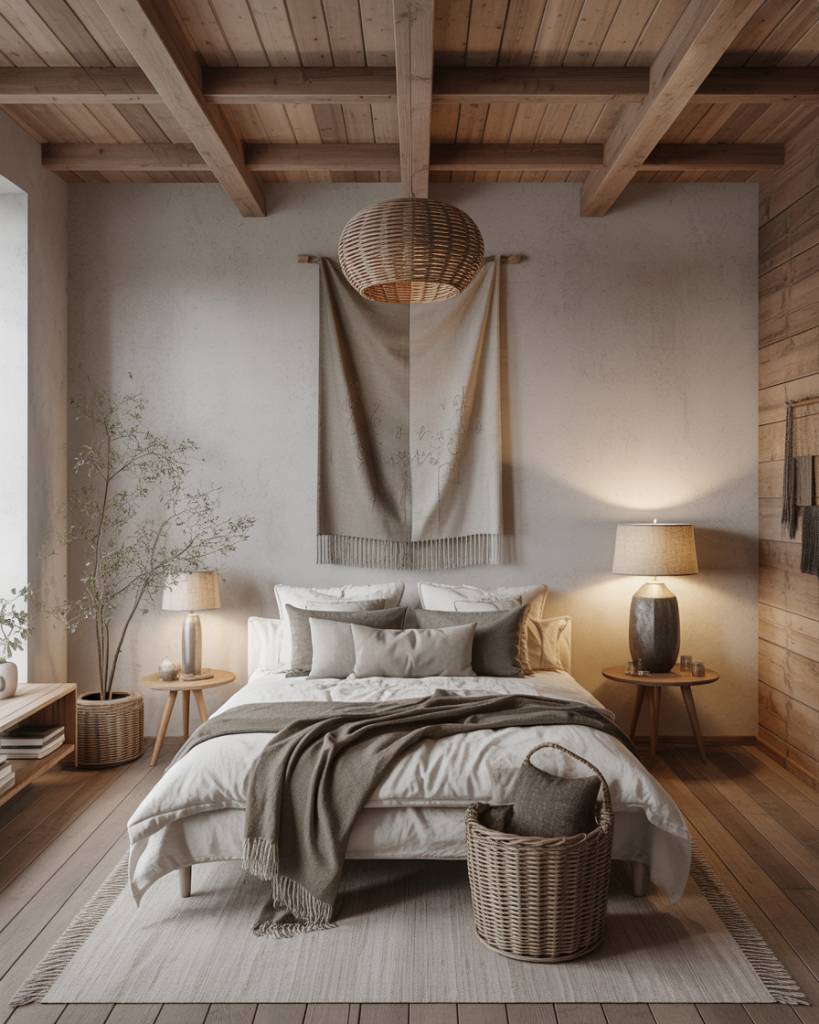
Scandinavian interiors often nod to rustic traditions using hand-crafted elements, wool, and exposed wood. This idea suits cabins, farmhouses, or any home wanting warmth without clutter. Many American decorators admire this approach because it pairs authenticity with a contemporary sense of simplicity.
11. Light-Filled Scandinavian Windows
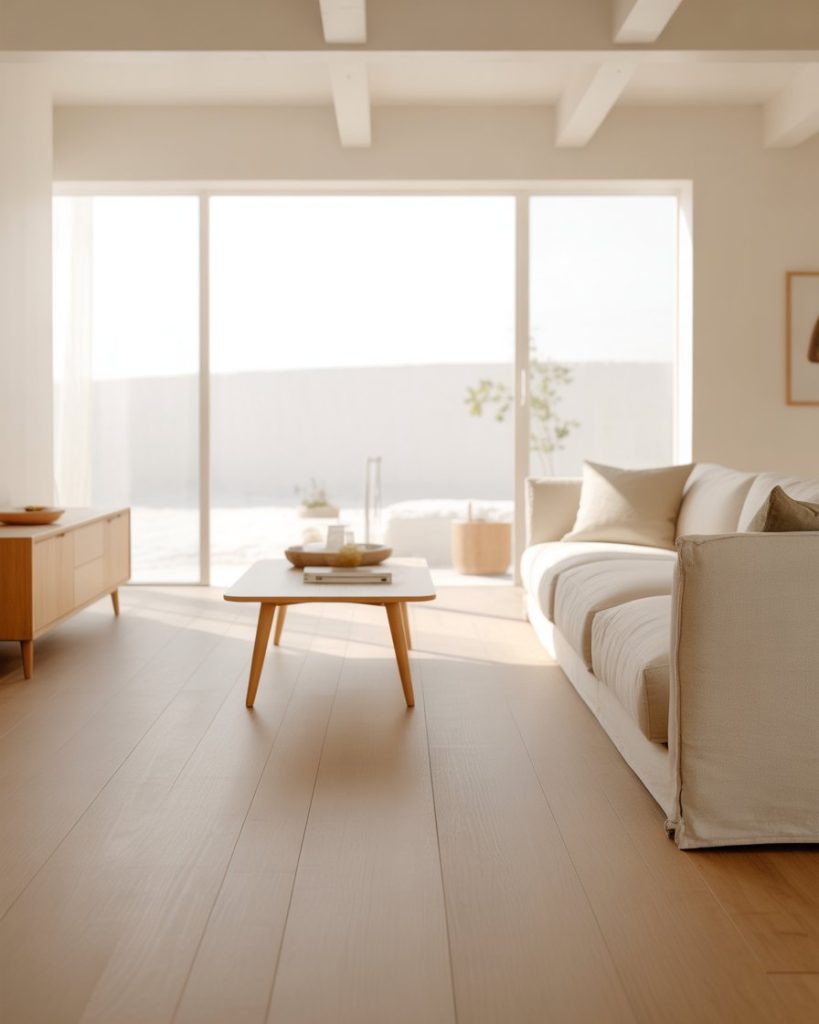
A key part of design in Nordic homes is maximizing light, making large windows essential to the style. This approach brightens a living room or office naturally, supporting a calm mood. I’ve visited homes in Seattle where the owners removed heavy curtains and immediately felt their space expand, proving how transformative natural light can be.
12. Pastel Scandinavian Accents

The soft pastel hue is moderately elegant and is suitable for the modern Nordic style without compromising the niceness of the accommodations. It adds a gentle touch of warmth and elegance in a bedroom and kitchen and is ideal in the form of a muted blush or soft blue. I once saw a home designer positively transform a small home with the gentle, uplifting touch of pastel ceramics.
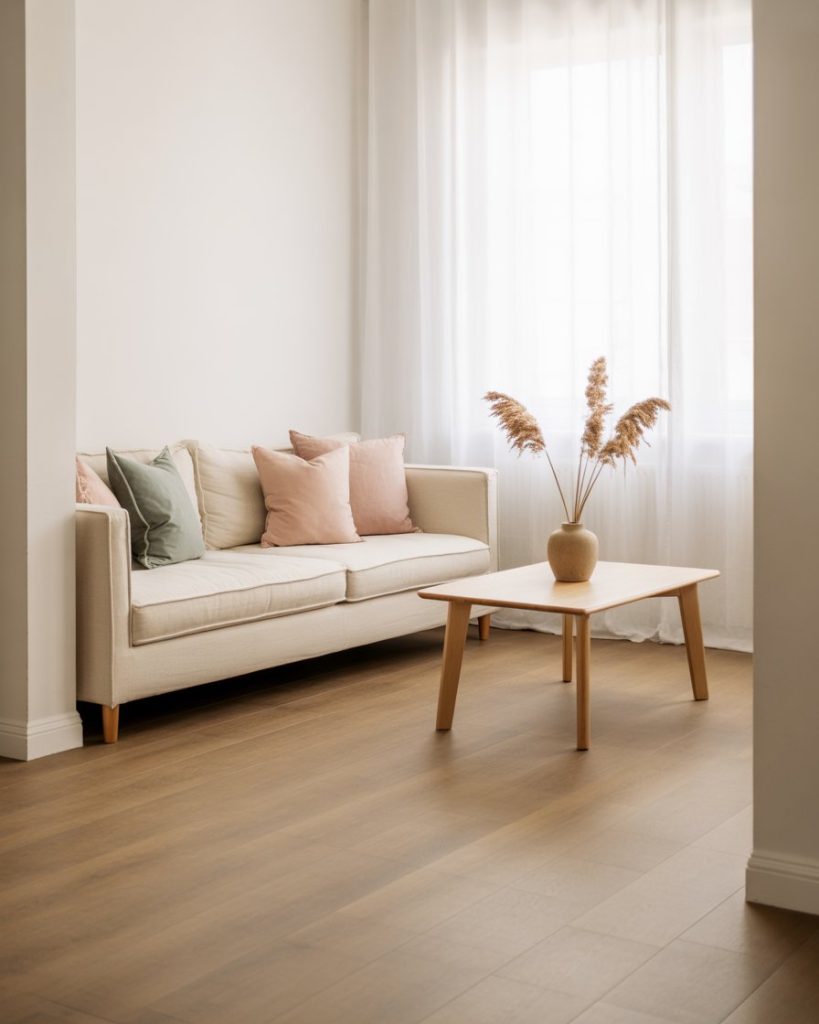
13. Scandinavian Color Palette Balance
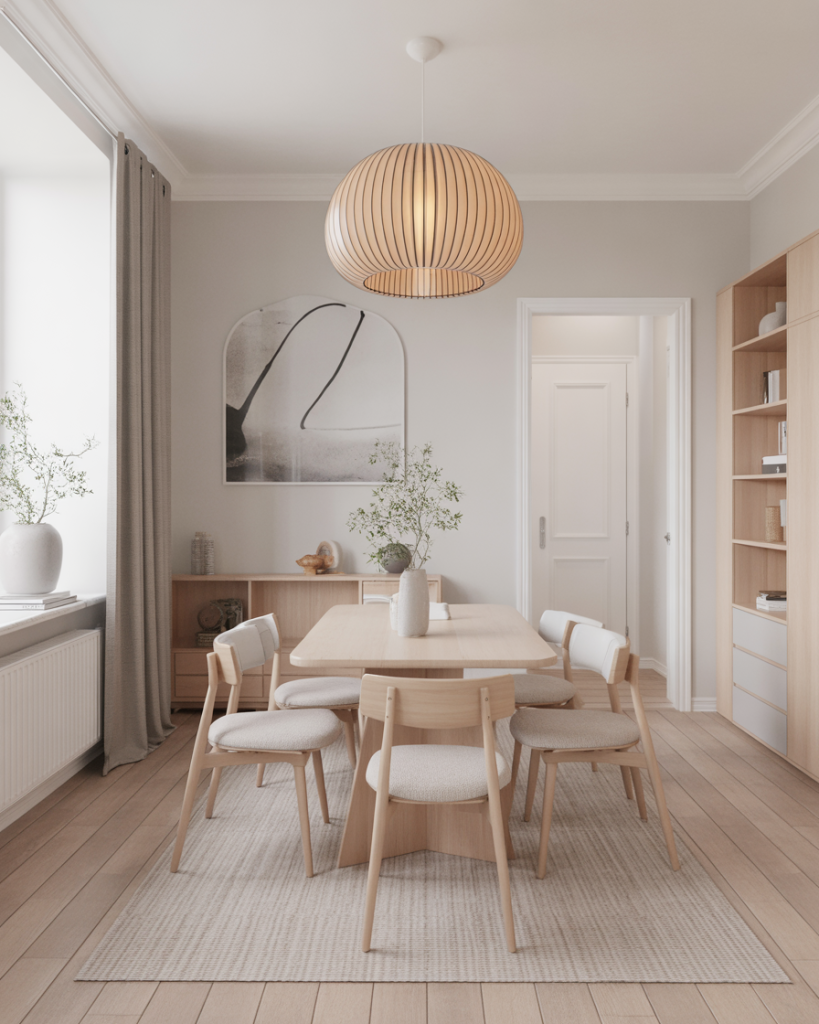
Scandinavian interiors are defined and distinguished by the harmony of the construction of an appropriate color palette of soft grays, warm whites, and light natural wood. The balance is perfect in a living room and even a bathroom, nourishing the feeling of interconnectedness within the space. Calm continuity is an impact many decorators acknowledge the northern hue of the space brings to the home.
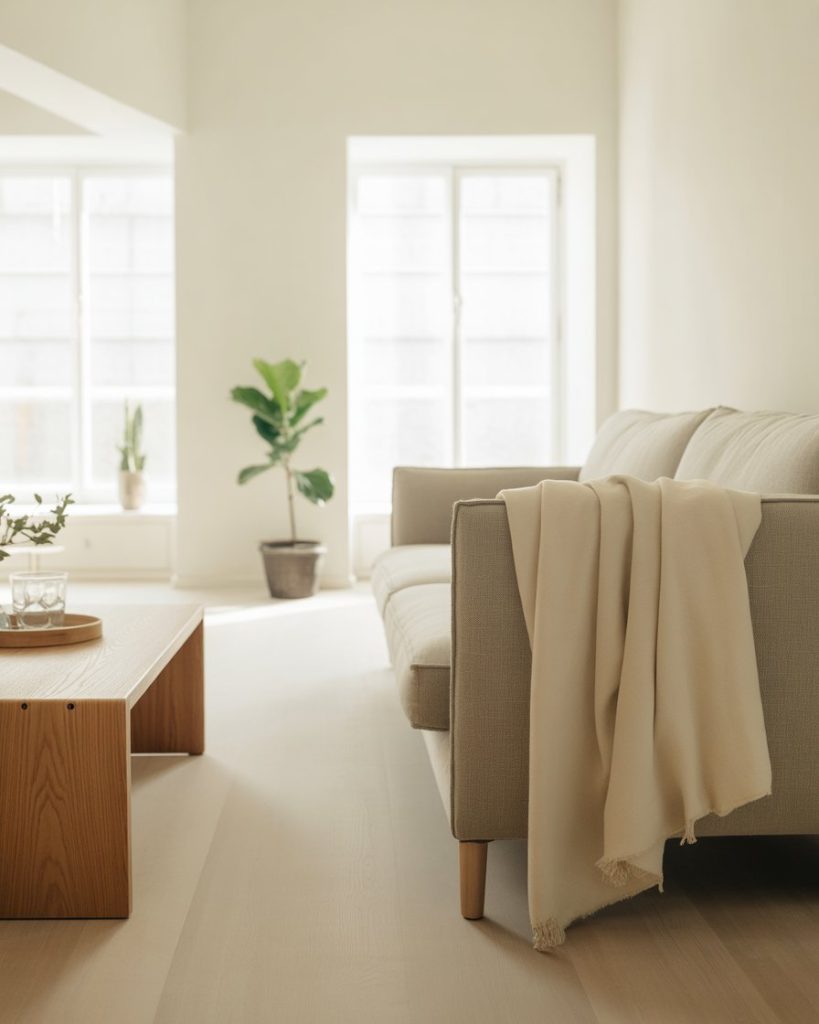
14. Contemporary Nordic Geometry
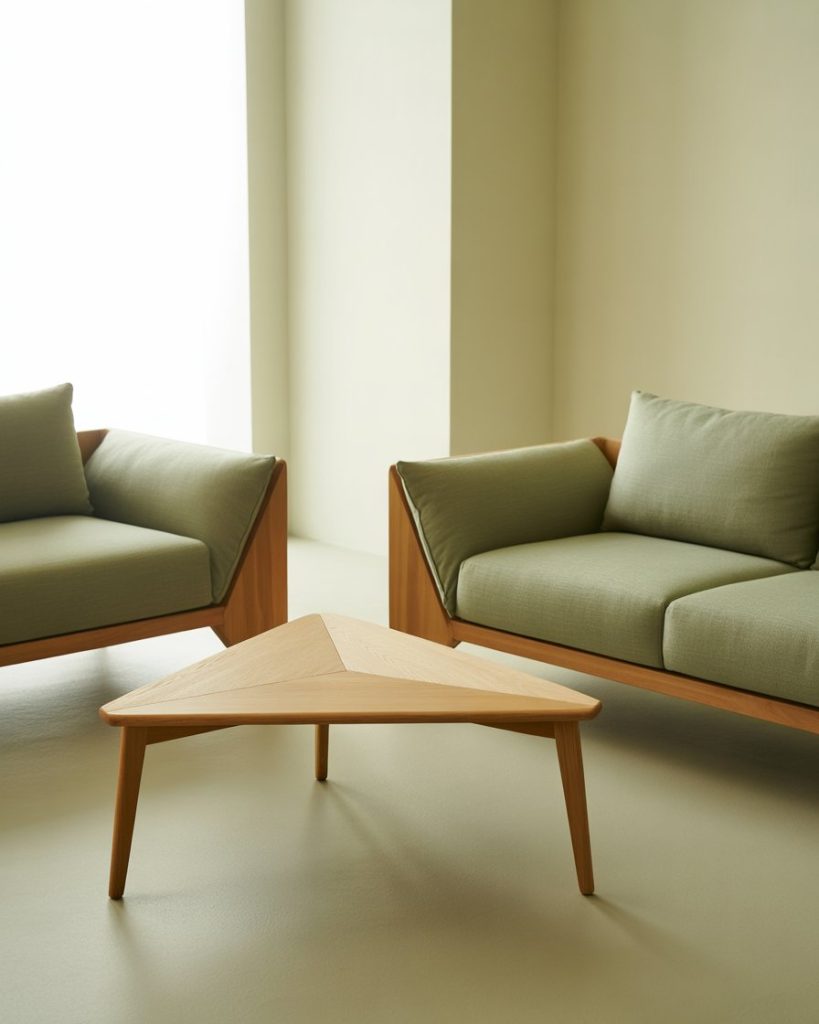
The Contemporary Scandinavian style is famous for its minimalist looks, which are based on clean geometrical features like straight lines, refined proportions, and curved wood cut in the form of a well-spread silhouette. Its classic touch is seen in modern dining rooms, entryways, and office spaces. This approach is ideal for homeowners who value the addition of quiet visual weight and sophistication.
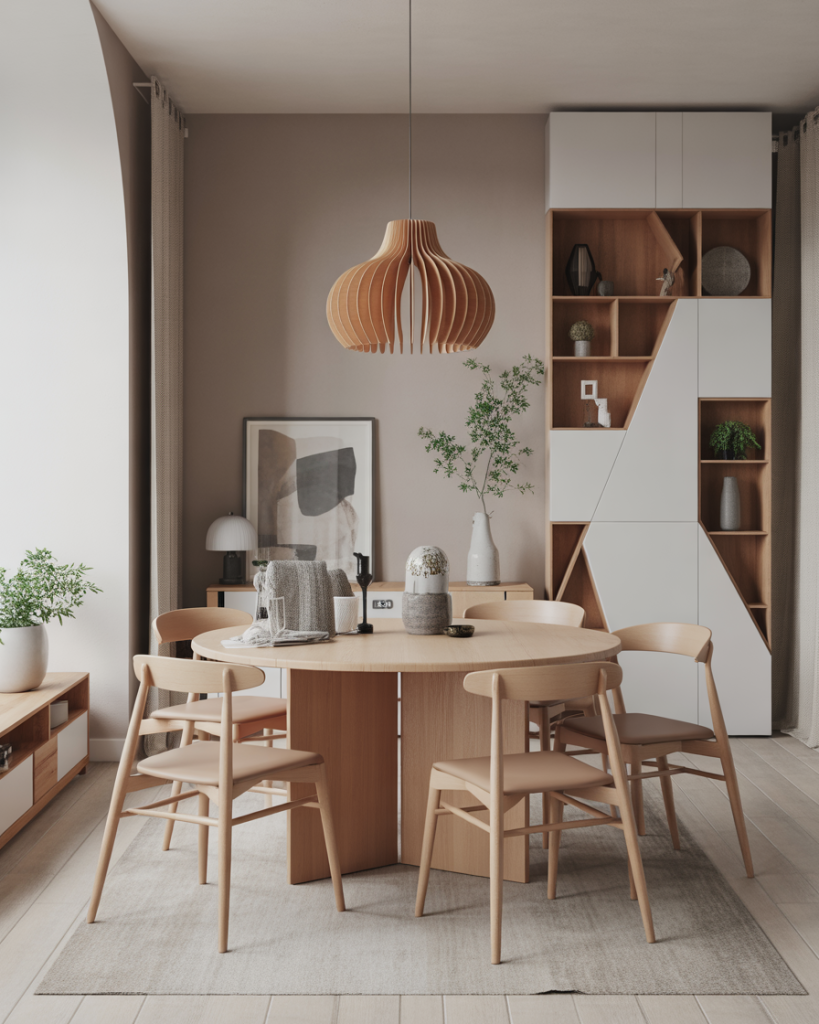
15. Scandinavian Living Room Zoning
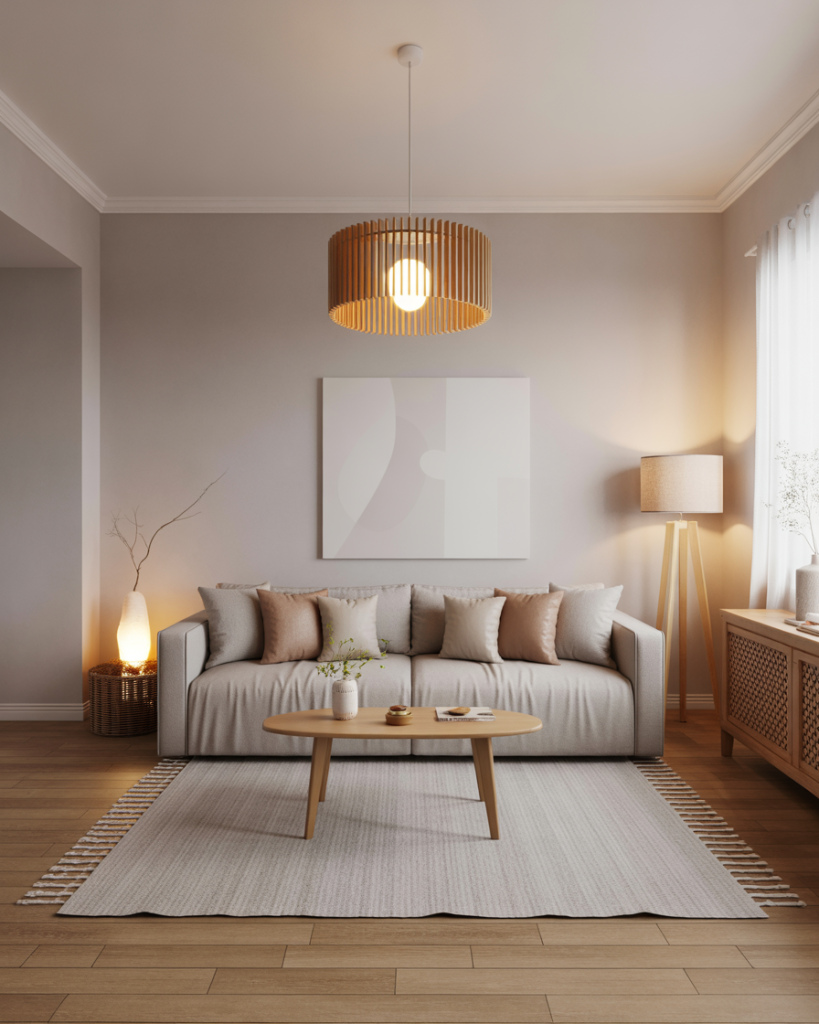
The design of living room zones adds functions and peacefulness. In a Nordic living room, the use of rugs and lighting, as well as the placement of furniture, can divide the area of conversations. I have seen how even the smaller apartments lose the crowded feeling if planners incorporate this into the layout.
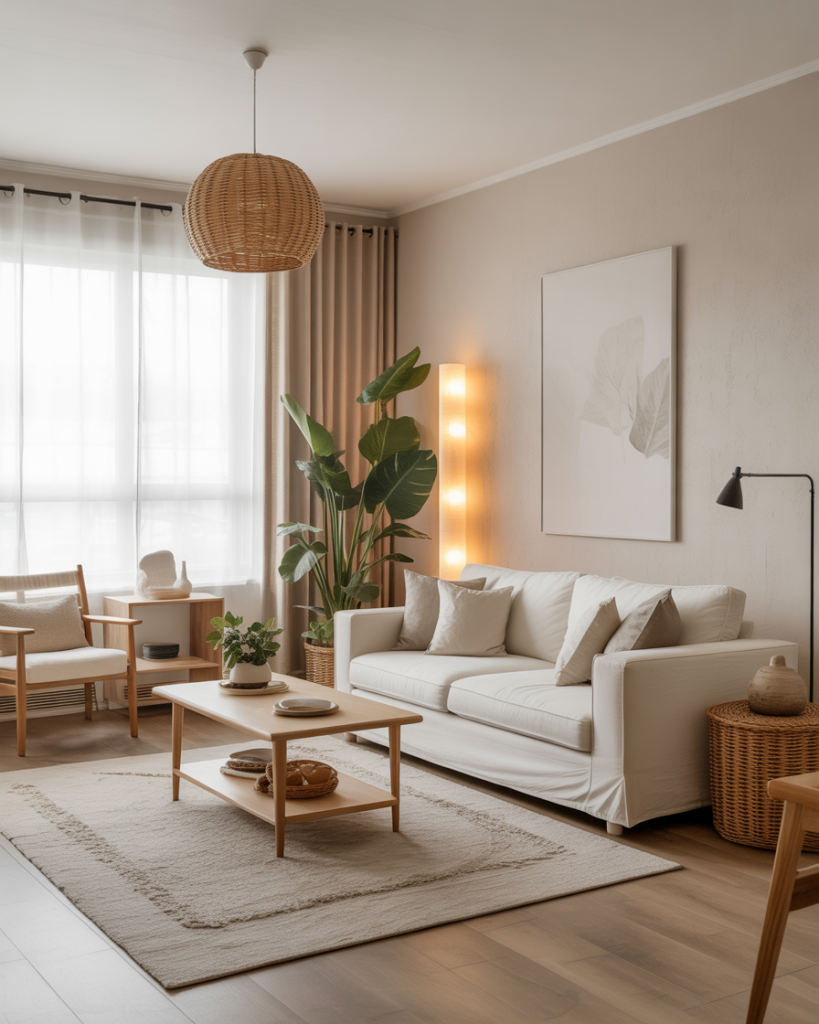
16. Scandinavian Traditional Touches
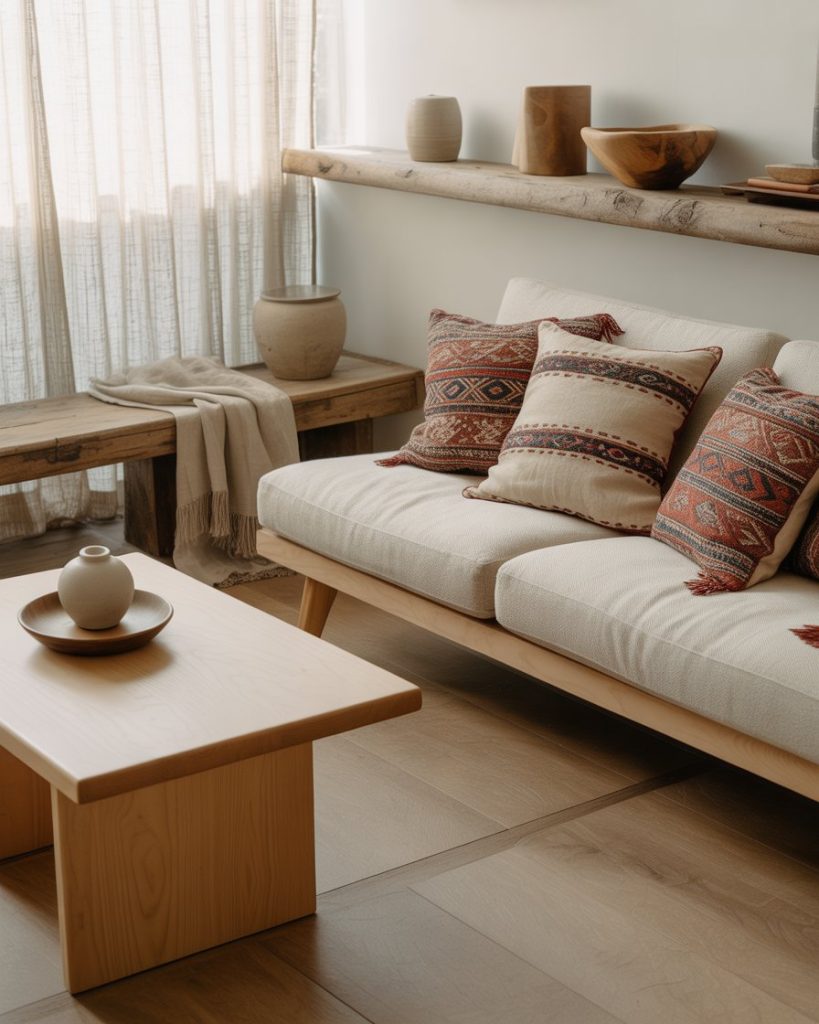
The addition of traditional Nordic design elements, patterning style on textiles, handmade decor, and especially woodwork gives the modern area a new culture. So it can give a soft touch to a minimal room or a rustic kitchen area. After the discovery of the Scandinavian heritage design in pattern magazines, many American homes adopted this idea.

17. Moody Nordic Corners
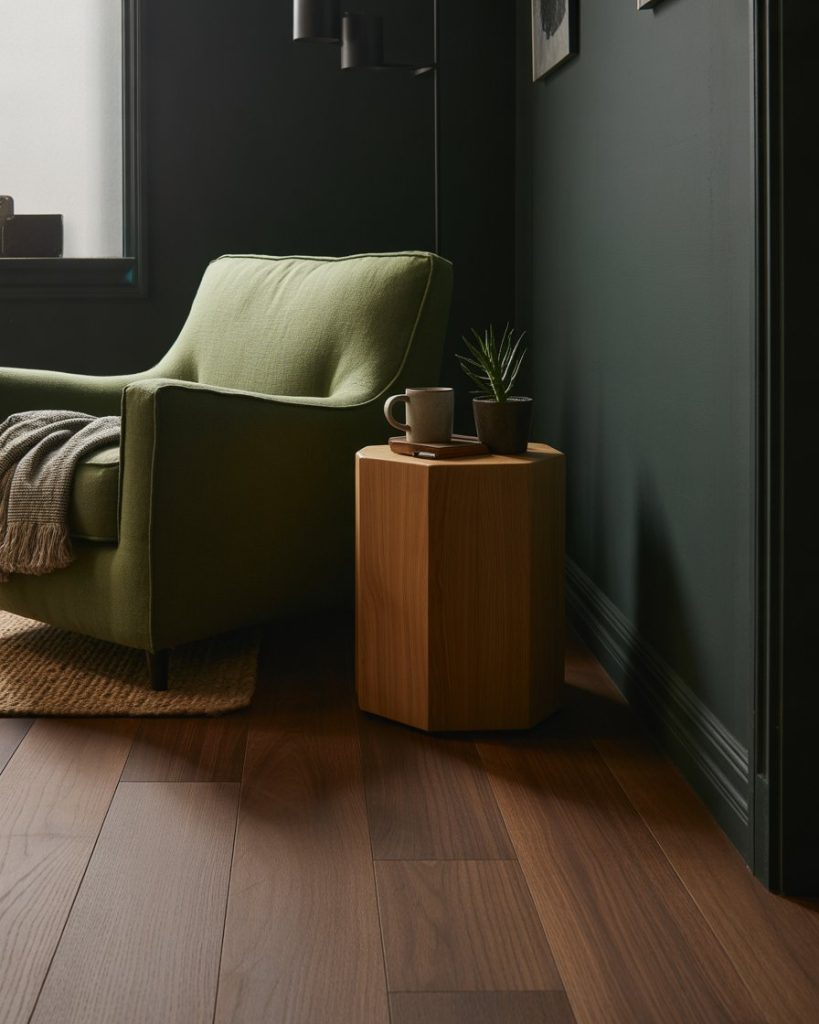
In the Scandinavian style, an area created for the moody feel of deep colors and soft lighting that is spread across the area creates a comforting area. For reading and relaxation, it is fine for the bedroom, hallway, or office, and I have seen how grounding a feel during the evening hours it is when my friends embraced the dark Nordic palettes afterwards.
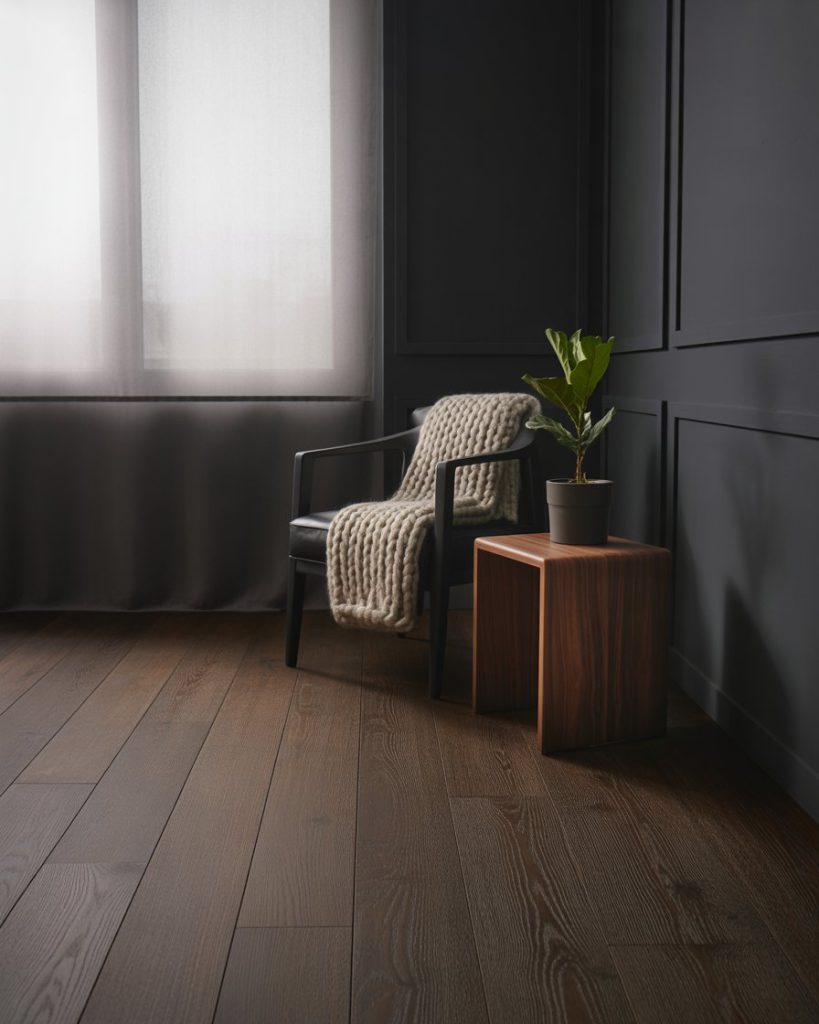
18. Scandinavian Kitchen Simplicity
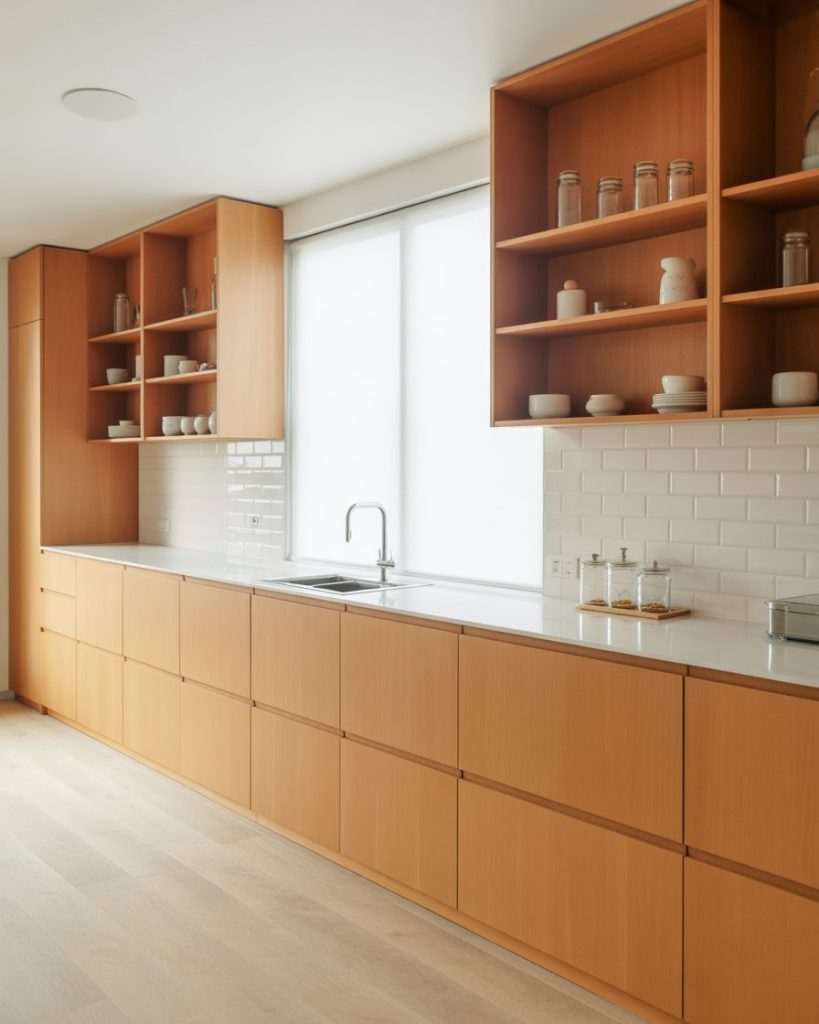
A kitchen built on Nordic principles emphasizes uncluttered surfaces, integrated storage, and warm materials. Even busy families appreciate how streamlined cabinetry makes cooking feel calmer. Designers like those at Dezeen often praise this approach for marrying practicality with style.
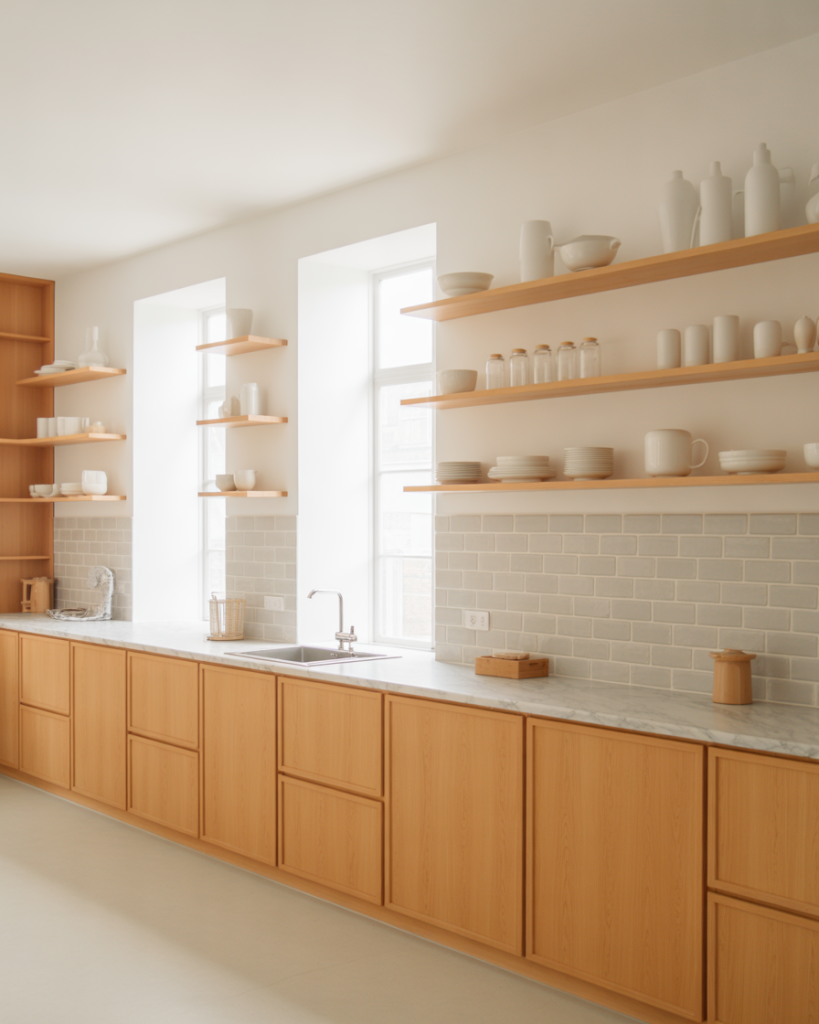
19. Soft Contemporary Bedroom
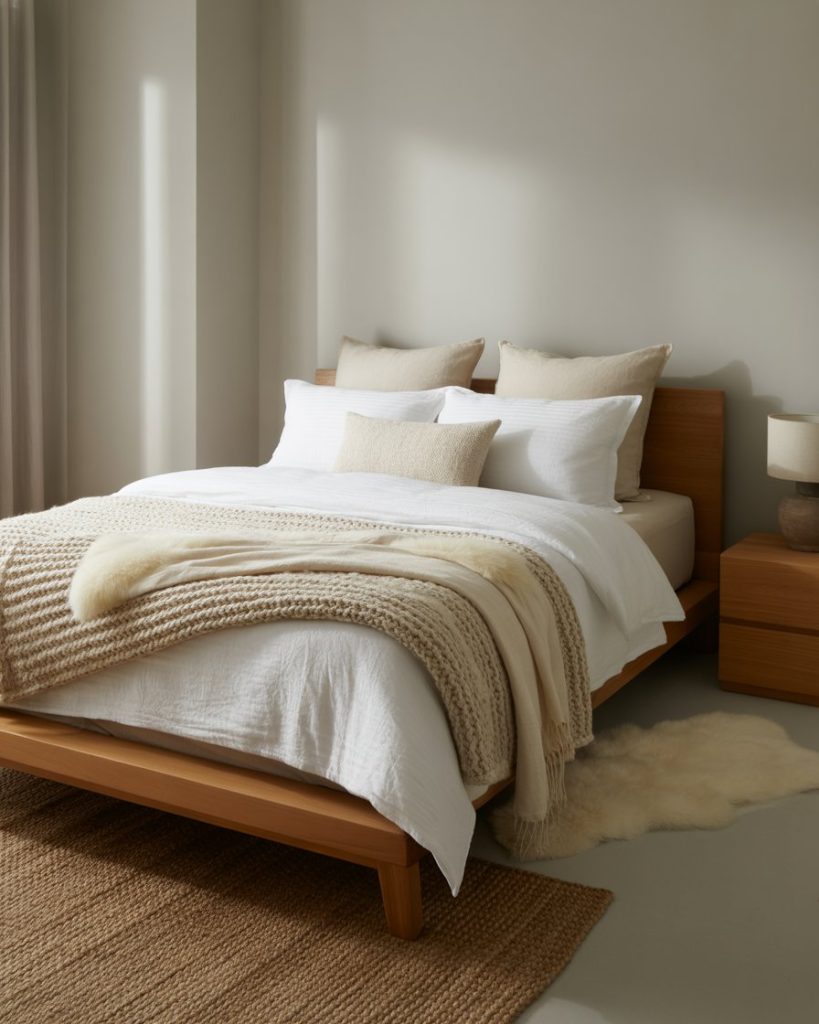
A bedroom with contemporary Scandinavian touches uses warm wood, layered bedding, and subtle accents. This creates a sanctuary-like atmosphere that suits both small apartments and family homes. I once slept in a Nordic-inspired guest room that felt effortlessly relaxing.
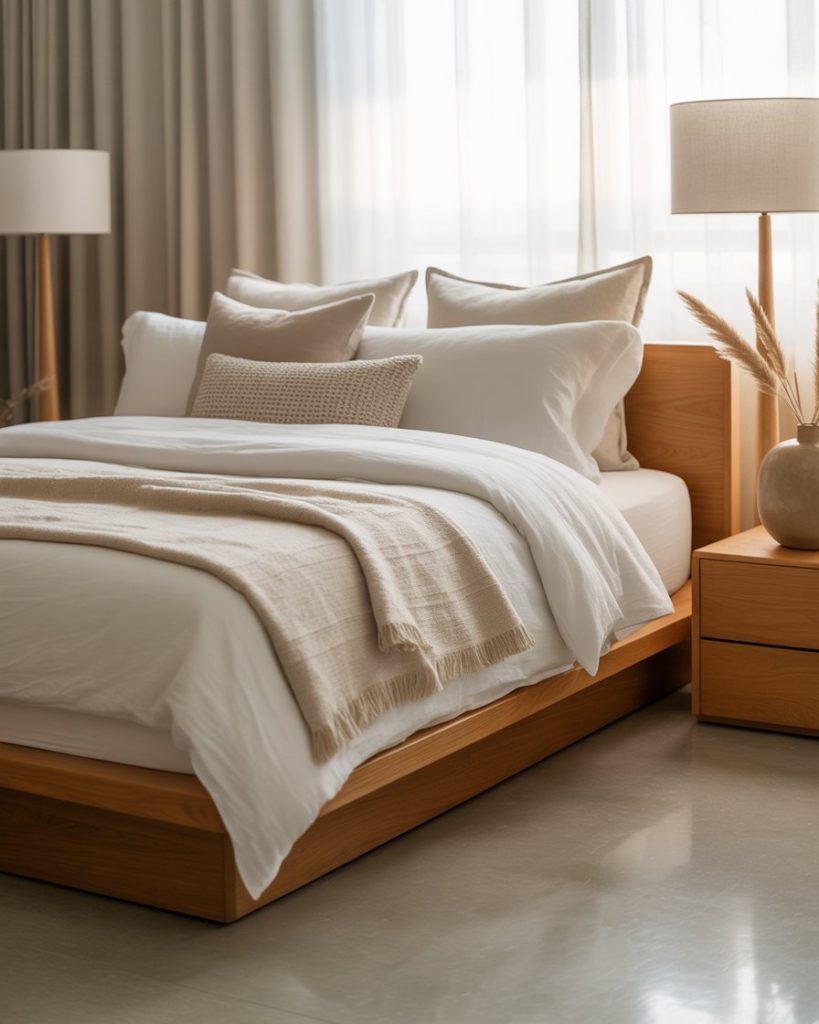
20. Industrial Nordic Kitchen

Blending industrial elements with Nordic softness transforms a kitchen into a stylish hybrid. Concrete counters balanced with natural wood achieve a modern yet inviting feel. This combination is often featured in Scandinavian loft renovations highlighted by design influencers.
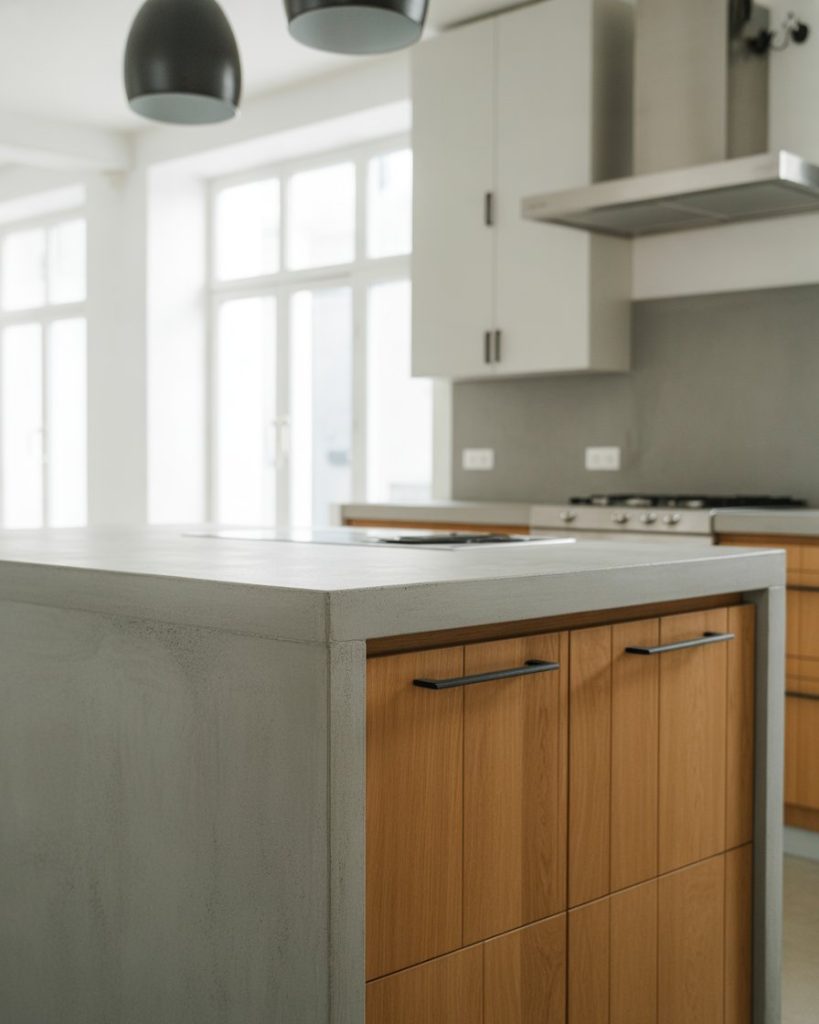
21. Rustic Scandinavian Entryway
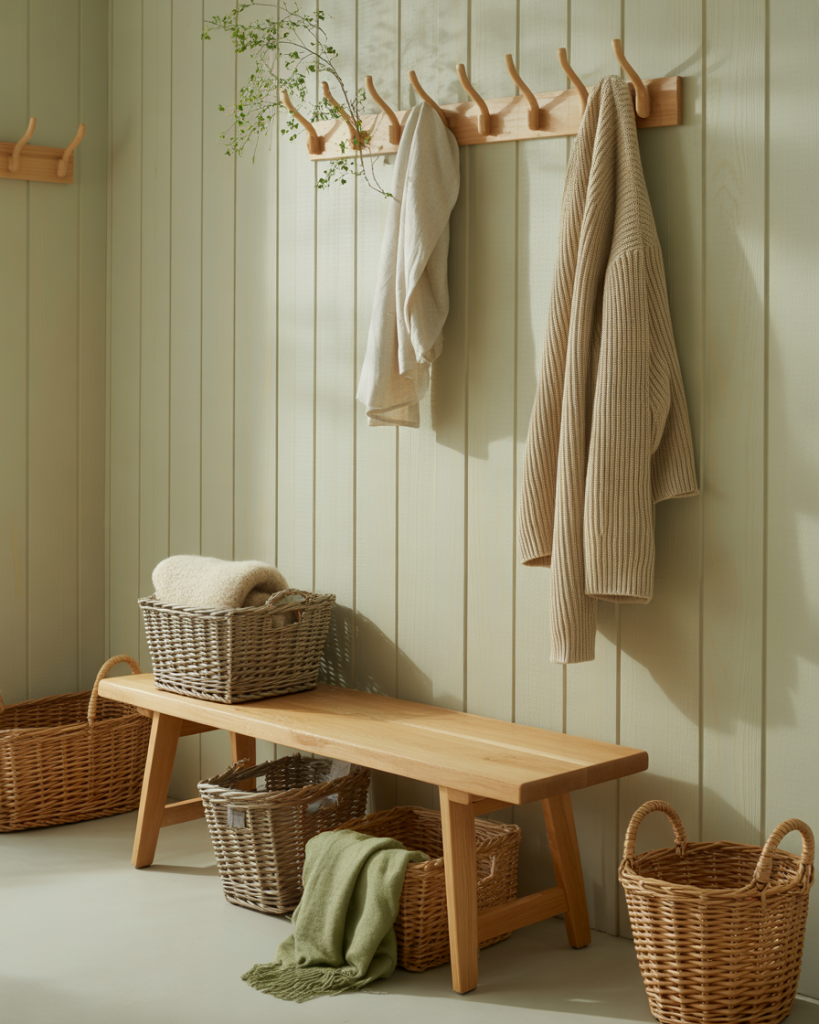
A rustic Nordic entryway uses woven baskets, simple benches, and warm woods to set a welcoming tone. This idea fits both cabins and suburban homes, offering functional charm. I’ve seen families quickly adopt this style because it organizes daily clutter without sacrificing beauty.
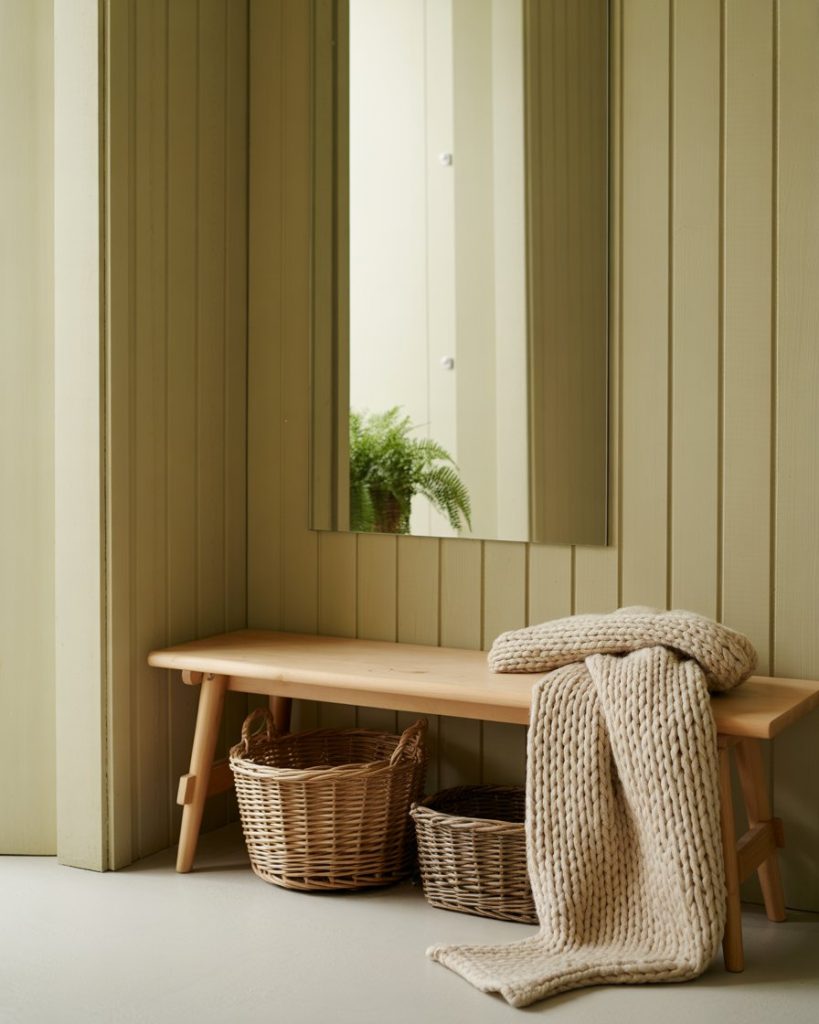

Conclusion
Scandinavian interior design continues to evolve while staying true to its values of warmth, simplicity, and purpose. I’d love for you to share which ideas resonate most with your own home and which styles you’re experimenting with. Join the conversation below, and let’s discuss your favorite Scandinavian looks and personal interpretations.
